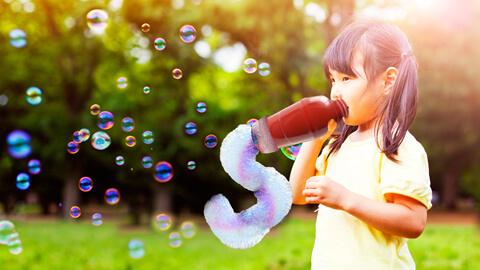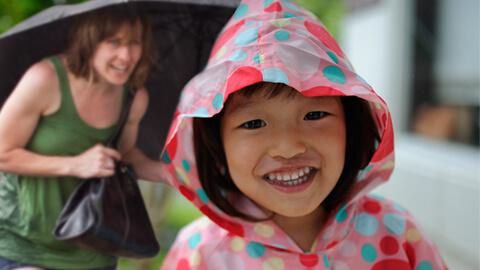All children have their own timetable, but you can watch for certain developments in your 3-year-old. Celebrate with your child as she reaches or nears these milestones.
Cognitive
- Correctly names as many as eight colors
- Understands the concept of counting; knows some numbers
- Sense of time improves (now, later, next)
- Remembers parts of stories
- Understands the concepts of same and different
- Explores cause and effect
- Likes to classify and organize objects (by size, color); sees patterns
- Does six- to eight-piece puzzles
- Identifies some signs and labels
- Uses role play (“You be the baby, and I’ll be the mommy.”)
- Likes fantasy play, beyond the pretend play that imitates everyday life (princesses and pirates)
- Still confuses fantasy and reality
- Follows three-part commands
Motor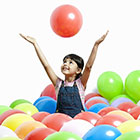
- Moves effortlessly (walking, running, jumping)
- Walks forward and backward
- Rides a tricycle
- Navigates stairs without support
- Catches a large ball
- Throws a small ball overhand
- Stands on one foot for five seconds
- Holds a crayon or pencil like an adult
- Draws a person with two to four body parts
- Uses scissors
- Copies some capital letters
- Dresses and undresses self
- Almost all have mastered potty training by age 4
Communication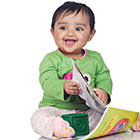
- Likely knows 300 words by age 3
- Speaks in sentences of three to four or more words
- Usually speaks without repeating words or syllables
- Imitates most adult speech sounds but still mispronounces many words
- Probably chatters continuously
- Speaks clearly enough to be understood by strangers
- Tells stories
- Follows many basic rules of grammar
- Uses the words “I,” “me,” “mine,” and “you,” though not always perfectly
Social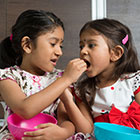
- Very interested in new experiences
- Shows preferences for certain children
- Plays with (not just next to) other kids
- May have imaginary friends
- Plays house as the mom or dad
- Understands basic turn-taking
- Understands the concept of possessives (mine, his, hers)
- May express anger or frustration by hitting or throwing
- May show fear of unfamiliar sounds or sights (monsters)
- Negotiates solutions to problems with parents and other kids
- Views self as whole person with body, mind, and feelings
- Increasingly independent
- May ask questions about birth and death
References:
“Caring for Your Baby and Young Child, Birth to Age 5 (5th Ed)” by the American Academy of Pediatrics.
“The Wonder Years: Helping Your Baby and Young Child Successfully Negotiate the Major Developmental Milestones” by the American Academy of Pediatrics.

